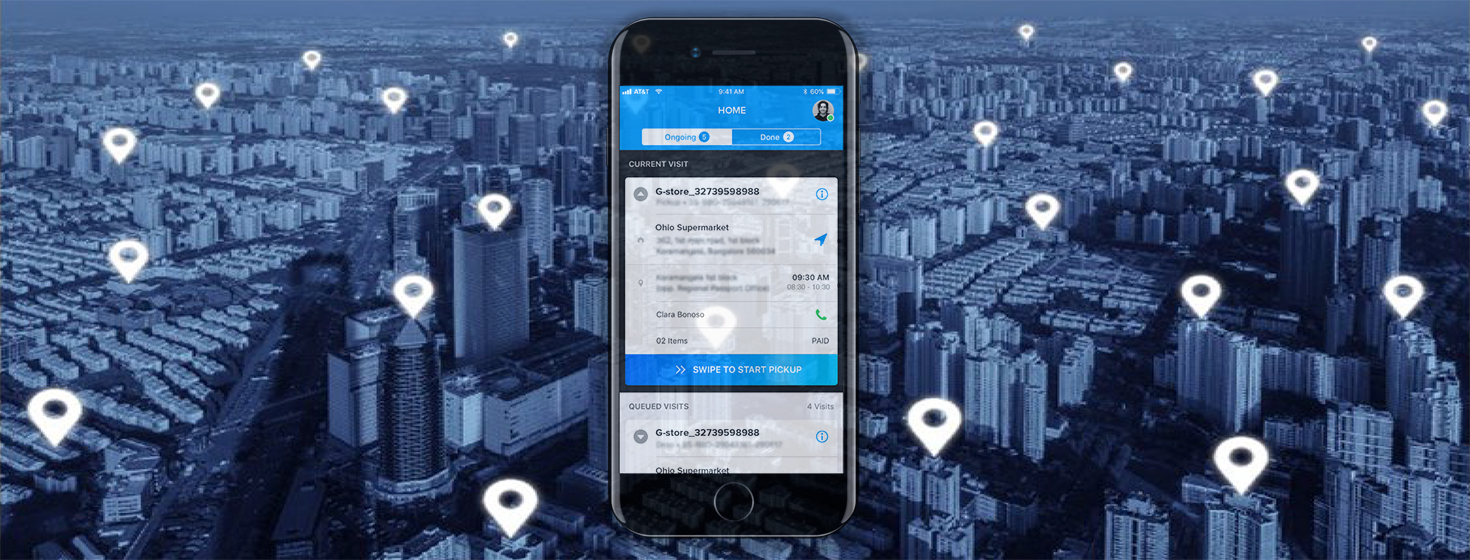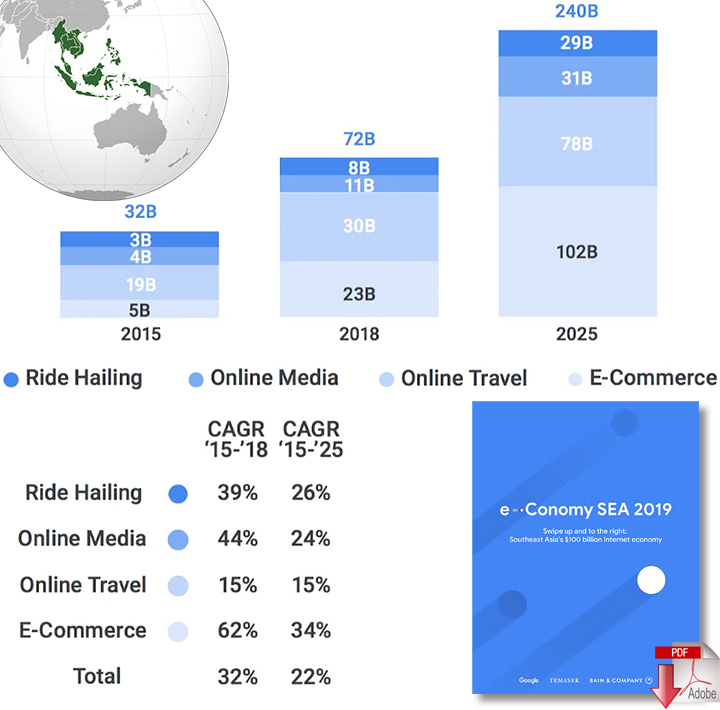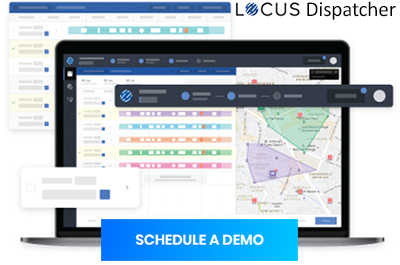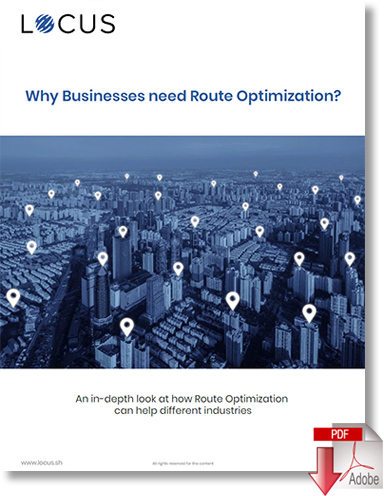AI-Backed Route Planning Solutions for Ecommerce Players

AI-backed route planning has a negligible dependence on human intelligence, it ensures reduced operational costs and enhanced customer experience even on an occasion as big as Single’s Day.
Single's Day - The Pride of Being Single
When we think of events that cause a sharp spike in e-commerce revenues, occasions like Cyber Monday and Black Friday come to our mind.
An often overlooked event that creates a massive boom for e-commerce companies in China and SE Asia is Single’s Day.
Showcasing the pride of being single, in 2018, the festival grossed for over $30 billion worth of products sold by Alibaba on the day of the event (as compared to Cyber Monday – $7.9 Billion and Black Friday – $6.22 billion), making it the single largest day from an e-commerce standpoint.
Started from China, the event has become quite popular in SE Asia over the years.
With more and more ASEAN population tuning into e-commerce, the online marketplaces prove to be the best real-time rescues for all the retailers and help them cover huge customer-base.
According to a recent study by Google, Temasek, and Bain & Company, the internet economy in the SE Asia region is on track to exceed $240 billion by 2025.
SEA Internet Economy Market Size (GMV, $B)
The occasion of Single’s day is no longer confined to Alibaba anymore, other e-commerce players have joined the bandwagon and are sharing a piece of the pie.
With the e-commerce industry booming, Singles’s Day is all set to become perhaps the biggest revenue generation event for SE Asia e-commerce companies.
However, the event doesn’t come without its challenges.
Logistics Challenges on Single’s Day
With a sudden surge in demand during Single’s Day, the logistics for the e-commerce players feel the pressure like never before.
With home deliveries being the norm now, supply chain managers need to ensure that they adhere to their SLAs and avoid miss-routes to provide on-time deliveries to their customers.
With rising customer expectations, simple efficiency in operation no longer cuts the bill for e-commerce players. Companies now need to ensure that the customers are serviced in the time-window of their choice.
Time definite delivery is the new benchmark that companies need to follow.
Read: When Will My Package Arrive? The Cost of Missed Deliveries
Another pressure point during this season is the need for additional working hours.
To cope up with the surge in demand, companies tend to work on two fronts: intake extra delivery personnel and include additional working hours in existing personnel’s day.
However, the number of personnel required and the additional number of deliveries in the extra hours are factors that are only estimated by supply chain managers based on their experience and intuition.
Even though the estimate can be correct for an average day, the festive spike in demand means that there is always a good chance of the estimates going haywire.
In such a situation, a shortage of personnel can affect the delivery, and an overabundance of staff can lead to extra costs for the company. The same is true when it comes to adding additional vehicles as well.
Traditionally companies relied on zip codes (postal system) for delivering orders. However, if the deliveries are spread across the area associated with the pin code, or a single delivery person is given more than one pin code to deliver, the task can become overwhelming for a single person.
To account for this situation, and ensure load balancing, companies started creating their own zones for deliveries. Working with delivery density, this method ensures fairness and efficiency in last-mile deliveries.
However, during the festive season, uneven distribution or hefty volumes throws off the usual zones as well.
This has led to companies use solutions like Locus Route Optimization, which provides dynamic clustering that ensures minimum overlap of clusters and guarantees optimum delivery routes.
Logistics Solutions for eCommerce Players
Locus provides an automated recommendation on the best-suited vehicle based on traffic, shipment volume, shipment type, vehicle type, stop durations, and delivery timings.
The algorithms take into account the new vehicles that might have been added during Single’s Day and provides the optimal utilization of the vehicle capacity leading to fewer vehicles required.
Locus uses its proprietary geocoding engine to convert even the most ambiguous of addresses into precise geographic coordinates, increasing efficiency and the average number of deliveries per rider.
“Locus’ AI-backed route planning has a negligible dependence on human intelligence, it ensures reduced operational costs and enhanced customer experience even on occasion as big as the Single’s Day.”
Locus is solving complex logistics decision-making problems for some of the biggest brands in Southeast Asia.
To know more, get in touch with Locus.
How Route Optimization Can Help Improve Last-Mile Deliveries and Reduce Logistics Costs
Locus’ Dispatcher (route optimization), provides AI-based automated route planning that considers multiple real-life constraints and distribution models and provides the following features;
- Geocoding and accurate address detection IP to automate sorting processes (primary & secondary).
- Optimal fleet mix and route plan for the vehicles respecting business as well as local constraints such as traffic, possible route restrictions, etc.
- Intelligent clubbing of orders based on properties such as preferred delivery time slots, priority orders, location preference, and order specifications (weight, size, content, etc.).
- Control tower application to manage operational exceptions and predictive alerts on delays, vehicle breakdowns, idle time, etc to improve both customer experience and efficiency of delivery executives.
- Reducing turnaround time for the customer by optimizing first-mile operations, locations of warehouses/distributer centers, reducing sorting times at fulfillment centers and last-mile distribution centers.
- Predicting time windows of delivery for customers thereby increasing first attempt rates and higher customer experience.
- Electronic proof of delivery (EPOD) for reducing friction with customers and digitization of the processes.
- Fitting more deliveries in a day by minimizing driving hours with more efficient routes.
With Locus’ proprietary Geocoding and Vehicle allocation engine, Dispatcher provides transparency, efficiency, and consistency in your supply chain along with reducing logistics costs.
Download the White Paper: Why Businesses Need Route Optimization
More Resources from Locus
Article Topics
Locus News & Resources
How Can White Glove Service Increase Customer Loyalty? Building Your Business Around a Hyperlocal On-Demand Delivery Model AI-Backed Route Planning Solutions for Ecommerce Players U.S. and Canada Border will Temporarily Close amid Coronavirus Outbreak Multi-Echelon Supply Chain Inventory Optimization Slot Management: Customer-Preferred Delivery Time Windows Last Mile Delivery Route Optimization and the Changing Logistics of Grocery Stores More LocusLatest in Transportation
FedEx Announces Plans to Shut Down Four Facilities The Two Most Important Factors in Last-Mile Delivery Most Companies Unprepared For Supply Chain Emergency Baltimore Bridge Collapse: Impact on Freight Navigating Amazon Logistics’ Growth Shakes Up Shipping Industry in 2023 Nissan Channels Tesla With Its Latest Manufacturing Process Why are Diesel Prices Climbing Back Over $4 a Gallon? More Transportation
















